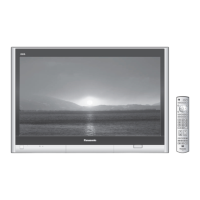
Do you have a question about the Panasonic TH-42PX600U, TH-50PX600U, TX-58PX600U and is the answer not in the manual?
| Aspect Ratio | 16:9 |
|---|---|
| Contrast Ratio | 10000:1 |
| HDTV Compatibility | Yes |
| HDMI Inputs | 2 |
| Component Video Inputs | 2 |
| S-Video Input | 1 |
| Screen Size | 42 in, 50 in, 58 in |
| Display Type | Plasma |
Essential safety guidelines for product usage, installation, and handling to prevent hazards.
Compliance statements regarding FCC regulations and Canadian standards for digital apparatus.
Critical warnings about product placement, electrical safety, and handling to prevent damage or injury.
Advice on preventing screen damage from static images and environmental factors.
List of all items provided with the TV, including remote control, batteries, and adapters.
Step-by-step guide for correctly inserting batteries into the remote control unit.
Detailed instructions for assembling the pedestal and securely attaching it to the TV unit.
Crucial warnings regarding secure assembly, stability, and preventing tip-overs with the pedestal.
Instructions for securing the 42-inch and 50-inch TVs to a base or wall using accessories.
Instructions for securing the 58-inch TV to a base or wall using provided accessories.
How to connect antenna and cable TV inputs for basic television reception.
Connecting VCRs, DVD recorders, and other video devices via various input terminals.
Steps for inserting and configuring a CableCARD™ for digital cable channels.
Using cable clamps and bands to neatly organize and secure connected cables.
Detailed explanation of each button on the remote control and its operation.
Identification of sensors, power indicator, and other controls on the main TV unit.
First steps to turn on the TV and choose the preferred language for the system.
Guide to adjusting the internal clock for accurate timekeeping and scheduling.
Procedure for performing an automatic scan to find and tune available TV channels.
Steps to begin setting up the TV Guide On Screen service for program listings.
Setting country and choosing service types (Antenna, Cable) for TV Guide.
Verifying the configured settings and ensuring all selected services are correctly set up.
Configuring the TV Guide to control VCRs for scheduling program recordings.
Completing the setup and understanding how to check the progress of TV Guide data downloading.
Methods for selecting channels and notes on signal reception for antenna and cable.
Instructions to disable the automatic display of the TV Guide upon powering on the TV.
Setting the sleep timer and displaying channel information or the channel banner.
Adjusting the picture's aspect ratio and using the split-screen feature for multi-window viewing.
Selecting different audio tracks or modes for digital and analog broadcasts.
Registering, accessing, and managing a list of favorite TV channels for quick selection.
How to access and view the on-screen TV Guide for program schedules and information.
Understanding the service bar options: Schedule, Listings, Search, and Setup.
Navigating listings to select shows, view details, and tune into live broadcasts.
Modifying channel details, service assignments, and tune settings within the TV Guide.
How to schedule recordings or set reminders for specific TV programs using the TV Guide.
Adjusting system settings, channel display preferences, and default options for the TV Guide.
Methods for searching programs by category, type, or keyword for easy discovery.
Viewing, modifying, or deleting scheduled recordings and reminders.
Accessing and viewing past recording results and history.
Manually scheduling programs by specifying date, time, and channel, including conflict resolution.
Steps to insert an SD card and activate the memory card viewing mode.
How to navigate and view photos, including slide show and rotation options.
Setting playback modes, display time, and repeat options for photos on the SD card.
Fine-tuning picture settings like brightness and color for images viewed from the SD card.
Interpreting common warning messages related to SD card insertion and data.
Guidelines for proper handling, insertion, and care of SD cards to prevent damage.
Switching the TV input to devices like VCRs and DVD players.
Using the TV remote to operate playback functions of connected VCRs and DVD players.
Steps to connect a PC and select the PC input for displaying computer output.
Configuring settings like sync, dot clock, and position for optimal PC display.
Overview of accessing and navigating the TV's main menu for various settings.
Adjusting picture quality parameters and sound settings through the menu.
Detailed adjustments for color, brightness, contrast, and audio equalizer settings.
Configuring input labels, channels, timers, and system preferences.
Steps to activate the 'Control with HDMI' feature for integrated device operation.
Configuring power on/off links for connected HDMI devices for seamless control.
Controlling home theater speakers and automatic input switching via HDMI.
Using one-touch playback and managing power links for connected HDMI equipment.
Visual guides for connecting various HDMI-compatible devices.
Finalizing HDMI setup by adjusting 'Ctrl with HDMI' and other relevant settings.
Instructions for connecting an AV amplifier and daisy-chaining HDMI devices.
Steps to activate channel locking, set a password, and choose lock modes.
Method for selecting and locking individual channels or a range of channels.
Using V-chip technology to block programs based on age-based ratings.
Options for automatic scanning, manual tuning, and signal strength metering.
Performing auto program setup, selecting input, and starting the scan.
Modifying channel details, favorites, and checking signal strength.
Assigning custom labels to external input devices for easier identification.
Configuring closed caption display options for broadcasts.
Procedure to label connected external devices for simplified input selection.
Customizing text size, font, and style for digital closed captions.
Setting the sleep timer and scheduling automatic on/off times for the TV.
Steps to register remote control codes for operating other devices.
Procedure for searching and testing remote control codes.
Diagrams illustrating connections for camcorders, cable TV, DVDs, and VCRs.
How to connect and use the IR Blaster for scheduled recording with a VCR.
Connecting devices via HDMI for digital video and audio.
Details which remote control keys operate VCR, DBS/CBL, and DVD devices.
Lists of remote control codes for various cable converters and satellite receivers.
Lists of remote control codes for VCRs, DVD players, and DBS/PVR devices.
Explanation of MPAA and US TV ratings used for program blocking.
Details on Canadian English and French ratings for channel lock purposes.
Settings for closed caption display, including mode and format.
Choosing aspect ratios (FULL, JUST, H-FILL, ZOOM) for optimal picture display.
Information on supported file formats, folder structure, and cautions for SD card browsing.
Connecting to audio systems via Digital Audio Out and enabling HDMI control features.
Details on HDMI interface, compatible equipment, and signal types supported.
Managing side bars in 4:3 mode and selecting picture modes (Vivid, Standard, Cinema).
Information on CableCARD™ functionality and service requirements.
Specifications for PC input signals, resolutions, and connector pinouts.
Connecting the IR Blaster for remote control of VCRs and scheduling recordings.
Instructions for gently cleaning the TV screen, cabinet, and pedestal.
Solutions for white spots, interference, frozen channels, and distorted HDMI picture.
Troubleshooting steps for remote control malfunction and power-on problems.
Solutions for screen saver activation, dark spots, noisy images, and black boxes.
Troubleshooting sound problems and 'Control with HDMI' function malfunctions.
Solutions for missing or incorrect TV Guide lists and channel displays.
Troubleshooting problems with executing reserved recordings and receiving broadcasts.
Detailed technical specifications including dimensions, power, and input/output terminals.
Details on warranty period, repair/replacement options, and exclusions for US products.
Contact information for product assistance, parts, accessories, and service in the USA.
Details on warranty coverage, service locations, and limitations for products purchased in Canada.
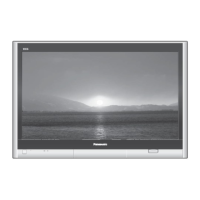
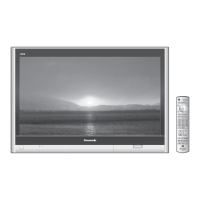
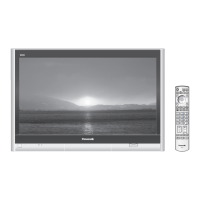
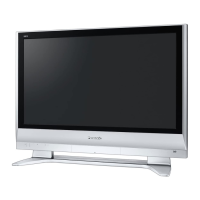

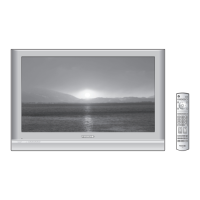
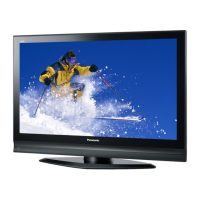
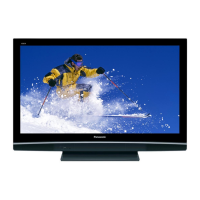
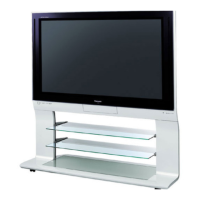

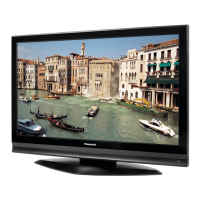

